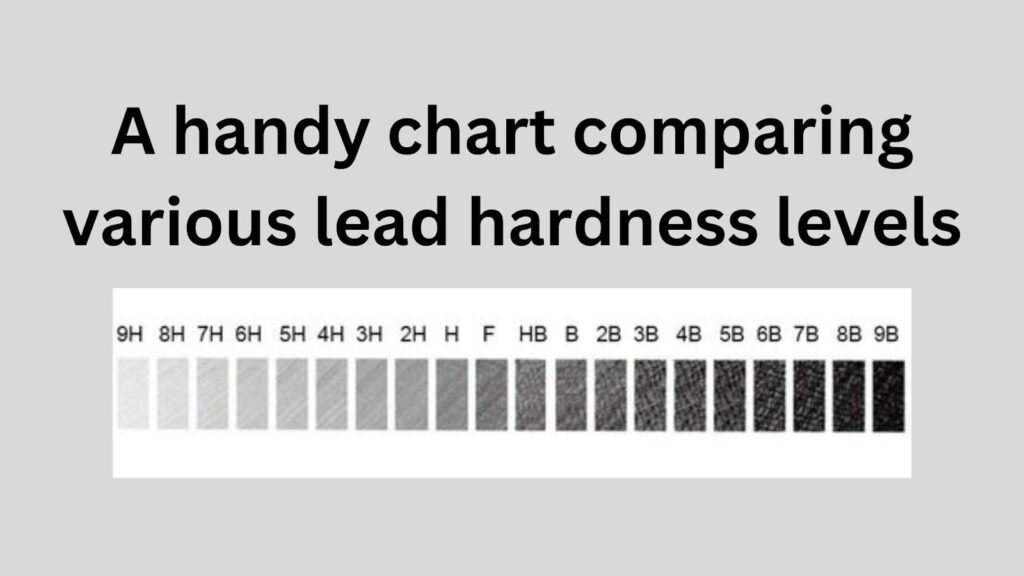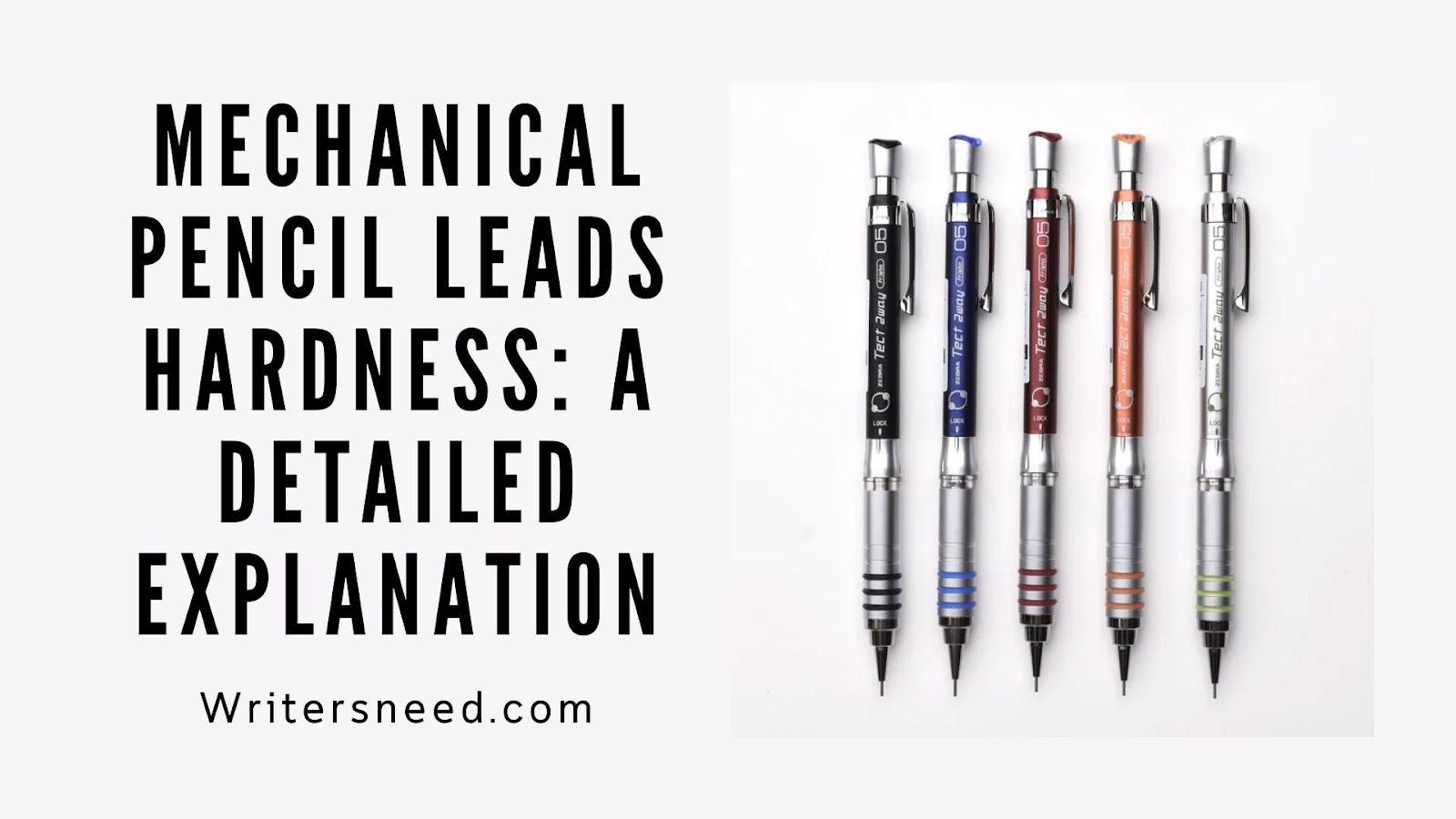As an Amazon Associate we earn from qualifying purchases. Learn More.
Just like regular wooden pencils, you’ll find Mechanical Pencils with some letters and numbers written on them. Labels like 2B, 4B, 6B, etc. refer to soft pencils. On the other hand, 2H, 4H, and 6H refer to the hard ones. So, in short, the pencil lead’s hardness depends on the labels. If it’s 2B, it’ll be softer than 2H, if it’s 4H, it’s harder than 4B, and so on.
So, the question here is, why should anyone care about the hardness of a pencil’s lead? Well, each pencil has its unique use case. Hence, as a passionate artist and writer, it’s important to have a full understanding of it. It’s not just about the lead’s thickness or color, but also its hardness, which can significantly influence the outcome of your work.
Let me explain to you more about mechanical pencil lead grades.
Table of Contents
What Does Mechanical Pencil Leads’ Hardness Refer To?
I’ve spent countless hours studying and experimenting with different types of lead sizes. Like a regular one, the core of a mechanical pencil is made of graphite and clay. Hence, it can come with different levels of rigidity. Here the term, hardness of a mechanical pencil refers to the rigidity or firm level of that core.
In simpler terms, it’s how hard or soft the lead is. It determines how the pencil feels when you write or draw and the darkness of the lines it produces. For example, the number 2 pencil would be mushier than the number 4 if it comes with a H label.
How is Mechanical Pencil Leads Hardness Graded?
The firmness of a mechanical pencil’s lead is graded using a scale that combines numbers and letters. The European system is the most common scale, which ranges from 9H to 9B. The ‘H’ stands for hardness, and the ‘B’ stands for blackness.
The higher the number increases before the ‘H’, the higher the degrees of hardness. On the other hand, the higher the number before the ‘B’, the softer and darker the lead. Yes, exactly like regular graphite pencil leads.
Let me share with you a handy chart comparing various lead hardness levels.

These are the most common lead grades in mechanical pencils you’ll come across.
Now, let’s break it down for a better understanding:
9H to 6H:
9H to 6H are the hardest and lightest grades. In the US system, they’re equivalent to #4. They’re perfect for technical drawing and light sketching. Architects often use these grades for blueprints.
5H to 4H:
5H to 4H are slightly softer but still on the hard side. They’re equivalent to #3 in the US system. These grades are ideal for precise line work and light shading.
3H to 2H:
3H to 2H grades are equivalent to #2.5 in the US system. They’re commonly used for general writing and detailed drawing.
H to F:
H to F grades are medium-hard grades, equivalent to #2 in the US system. Most mechanical pencils come with this grade as standard. These are versatile and suitable for both writing and drawing.
HB:
HB grade is a perfect balance between hard and soft leads. It’s equivalent to #2 or #2.5 in the US system. It’s the go-to grade for everyday writing and sketching.
B to 2B:
B to 2B are softer and darker grades, equivalent to #1 in the US system. Artists often use these grades for sketching and shading.
3B to 9B:
3B to 9B grades are the softest and darkest grades. They don’t have a direct equivalent in the US system but can be considered softer than #1. They’re perfect for expressive drawing and deep shading.
Why Should Anybody Care About These Grades?
It’s evident that mechanical pencil lead size, toughness, and quality matter, especially if you have a deep passion for writing or drawing.
Understanding mechanical pencil leads’ hardness can significantly impact your work’s quality. It allows you to choose the right pencil for your specific task, be it writing, sketching, or drafting.
For instance,
If you’re writing, you might prefer a harder lead like an H or 2H.
If you’re sketching or drawing, a softer lead like a B or 2B might be more suitable.
If you’re a writer or a student who does a lot of notetakings, a lead with a hardness of HB or F is ideal.
A 9B lead, with its softness and darkness, would be the perfect choice for adding depth and texture to the hair or the shadows in the portrait.
How To Choose the Right Lead Grade?
Well, this ultimately comes down to personal preference and the task at hand. The best practice would be to experiment with different lead types of grades to find what works best for you.
Remember, there’s no one-size-fits-all when it comes to mechanical or wooden pencil leads. What’s important is that you find something that feels comfortable to use and produces the results you want.
Here’s a simple guide explaining what each grade is best for.
9H – Ideal for technical drawing and fine details.
8H – Great for detailed work and cross-hatching.
7H – Good for creating light, fine lines.
6H – Suitable for drawing and shading.
5H – Great for creating light, fine lines.
4H – Best for technical drawing and fine details.
3H – Ideal for detailed work and cross-hatching.
2H – Good for creating light, fine lines.
H – Suitable for general writing and drawing.
F – Ideal for fine, precise lines.
HB – Suitable for everyday writing and drawing.
B – Great for shading and sketching.
2B, 3B, 4B – Good for creating dark lines and shading.
5B, 6B, 7B, 8B, 9B – Ideal for creating very dark lines and shading.
These are all the available types you will find in the market. Choose the lead grade that best suits your needs and preferences. Also, don’t forget about the lead refill availability. It’s important too.
Wrapping it Up
So, the next time you pick up your mechanical pencil, remember this guide and make an informed choice. I recommend trying out different leads and seeing what suits your style and requirements.
Hard leads offer precision and smudge resistance, ideal for technical drawing, while soft leads provide bold and dark lines, perfect for expressive drawing and shading. The middle of the scale, HB, offers a balance of both, suitable for general use.
Keep in mind that the hardness can also be affected by factors like the pressure you apply while writing or drawing, the paper you use, and even the angle at which you hold your pencil.
Keep Reading:
- How To Get Pencil Lead Out of Skin
- The Best Mechanical Pencil Lead Reviews [A Complete Buying Guide]
- Is Mechanical Pencil Lead Toxic? [Know It Here]
- Can You Put Any Size Lead in a Mechanical Pencil?
- Do Mechanical Pencils Work on Scantrons?

Hi, I’m Andy Gary, the founder of Writers Need and a stationery enthusiast. I love to blog about anything regarding writing and have created lots of pages that I can now share with others!
